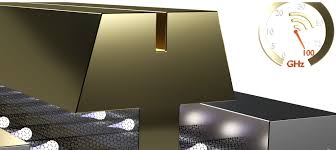
Breaking News
SEMI-NEWS/SEMI-SATIRE: December 7, 2025 Edition
 Harbor Freight Coverpro 12x20 made into a Metal Building part 2
Harbor Freight Coverpro 12x20 made into a Metal Building part 2
 Brian Cole BUSTED, Halle Berry NUKES Newsom + Candace REJECTS TPUSA Challenge...
Brian Cole BUSTED, Halle Berry NUKES Newsom + Candace REJECTS TPUSA Challenge...
 I spent my Thanksgiving in the emergency rom... Medical emergencies can pop up at any time.
I spent my Thanksgiving in the emergency rom... Medical emergencies can pop up at any time.
Top Tech News
 Build a Greenhouse HEATER that Lasts 10-15 DAYS!
Build a Greenhouse HEATER that Lasts 10-15 DAYS!
 Look at the genius idea he came up with using this tank that nobody wanted
Look at the genius idea he came up with using this tank that nobody wanted
 Latest Comet 3I Atlas Anomolies Like the Impossible 600,000 Mile Long Sunward Tail
Latest Comet 3I Atlas Anomolies Like the Impossible 600,000 Mile Long Sunward Tail
 Tesla Just Opened Its Biggest Supercharger Station Ever--And It's Powered By Solar And Batteries
Tesla Just Opened Its Biggest Supercharger Station Ever--And It's Powered By Solar And Batteries
 Your body already knows how to regrow limbs. We just haven't figured out how to turn it on yet.
Your body already knows how to regrow limbs. We just haven't figured out how to turn it on yet.
 We've wiretapped the gut-brain hotline to decode signals driving disease
We've wiretapped the gut-brain hotline to decode signals driving disease
 3D-printable concrete alternative hardens in three days, not four weeks
3D-printable concrete alternative hardens in three days, not four weeks
 Could satellite-beaming planes and airships make SpaceX's Starlink obsolete?
Could satellite-beaming planes and airships make SpaceX's Starlink obsolete?
Carbonics 100 GHz Wafer Scale Nanotube Technology Shows Nanotubes Can Finally Compete With Silicon

This indicates we could finally be close to a tipping point where nanotubes become a serious competitor to silicon in almost all areas of microelectronics.
Wireless device technology operating in the millimeter-wave regime (30 to 300 GHz) increasingly needs to offer both high performance and a high level of integration with complementary metal–oxide–semiconductor (CMOS) technology. Aligned carbon nanotubes are proposed as an alternative to III–V technologies in such applications because of their highly linear signal amplification and compatibility with CMOS. Carbonics report the wafer-scalable fabrication of aligned carbon nanotube field-effect transistors operating at gigahertz frequencies. The devices have gate lengths of 110 nm and are capable, in distinct devices, of an extrinsic cutoff frequency and maximum frequency of oscillation of over 100 GHz, which surpasses the 90 GHz cutoff frequency of radio-frequency CMOS devices with gate lengths of 100 nm and is close to the performance of GaAs technology. Carbonic devices offer good linearity, with distinct devices capable of a peak output third-order intercept point of 26.5 dB when normalized to the 1 dB compression power, and 10.4 dB when normalized to d.c. power.

 First totally synthetic human brain model has been realized
First totally synthetic human brain model has been realized Mach-23 potato gun to shoot satellites into space
Mach-23 potato gun to shoot satellites into space

